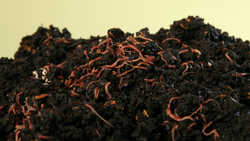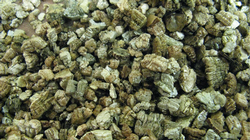Soil Amendments

A soil amendment is any material added to soil to improve its physical properties, such as water retention, permeability, drainage, aeration, and structure. They can also be used to modify soil pH. There are lots of different materials available you can use to improve your soil. Before deciding what to use, learn more about Improving Your Soil (see links on this page). Here are some common soil amendments:
Organic Materials

Compost: Made from decayed organic materials such as straw, food wastes, poultry litter, grass clippings, leaves, and manure. Improves soil structure and slowly releases nutrients to plant roots.
Earth worm castings: Very high in organic matter; neutral pH and contains trace elements, enzymes, and beneficial microorganisms.
Humus: Stable end-product of the decomposition of soil organic matter. It holds water and nutrients, aids soil aggregation, and contains huge microbial populations.
Leaves, leaf mulch, leaf mold (partially decomposed leaves): Leaves from deciduous trees offer organic matter, and essential plant nutrients such as potassium, calcium, phosphorus, magnesium, and boron.
Manure: Waste material from animals including horse, cow, pig, chicken, turkey, and sheep. Fresh material contains the highest amount of salts that can burn tender roots; should be composted first to reduce chance of burning. Conditions the soil, provides macro and micronutrients.
Peat moss (fibrous sphagnum): Partially composted moss mined from prehistoric non-renewable bogs. Light and porous, it absorbs 10-20 times its weight in water. Its high surface tension causes it to repel water when dry.
Sawdust: Only well-decayed sawdust should be incorporated into the soil. Fresh sawdust can burn plant roots and “tie up” nitrogen as it decomposes.
Wood bark: High in carbon and can deplete nitrogen from soil; use products that have added nitrogen or mix with nitrogen fertilizer before using.
Inorganic Materials

Greensand: Naturally occurring iron-potassium silicate with the ability to absorb 10 times more moisture than ordinary sand. Dual ability to bind sandy soils and loosen clay soils. Slightly acidic.
Gypsum: Calcium sulfate. The calcium is fast-acting. Can leach sodium from soils with high salt concentrations. Will not raise or lower soil pH.
Lime or Limestone: Generic term for a wide range of agricultural materials containing calcium and magnesium in forms that can reduce soil acidity. Provides large quantities of secondary nutrients.
Perlite: Naturally occurring expanded volcanic glass; a light material with an extremely large surface area that holds moisture and nutrients and makes them available to plant roots.
Pumice: Very lightweight volcanic rock that is used to increase aeration and drainage in potting mixes. It has a fair water holding capacity.
Sand: Use only coarse builder’s sand, not play sand. A minimum of 50% by volume is necessary to improve water drainage and aeration of clay soils.
Vermiculite: Mica-type mineral heated at high temperature to form sterile, expanded particles with many air spaces. Absorbs and holds nutrients and water.
